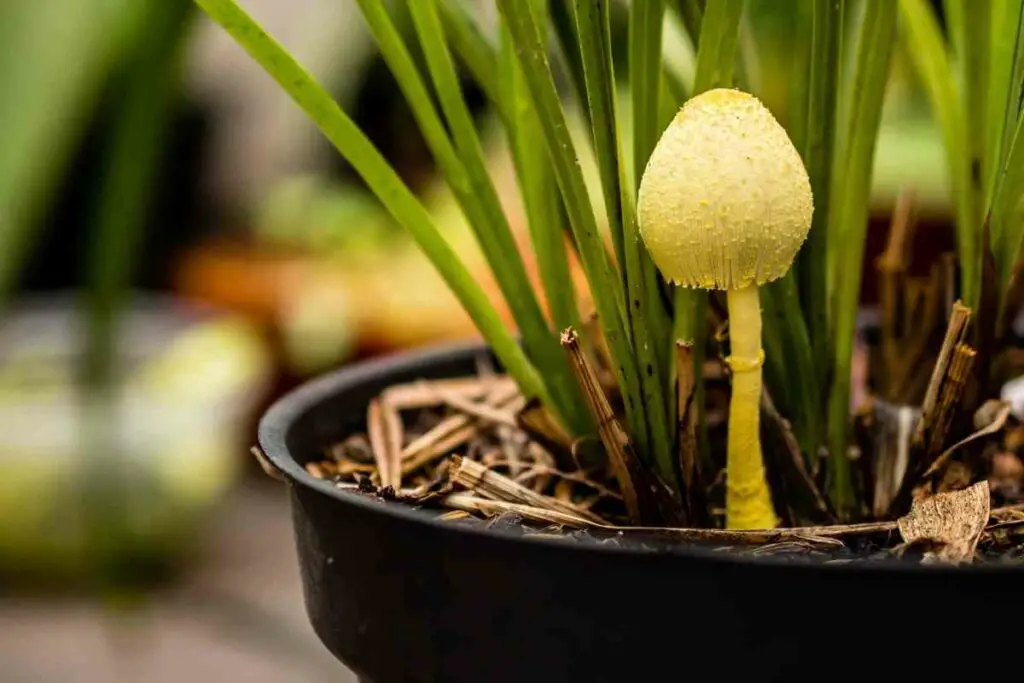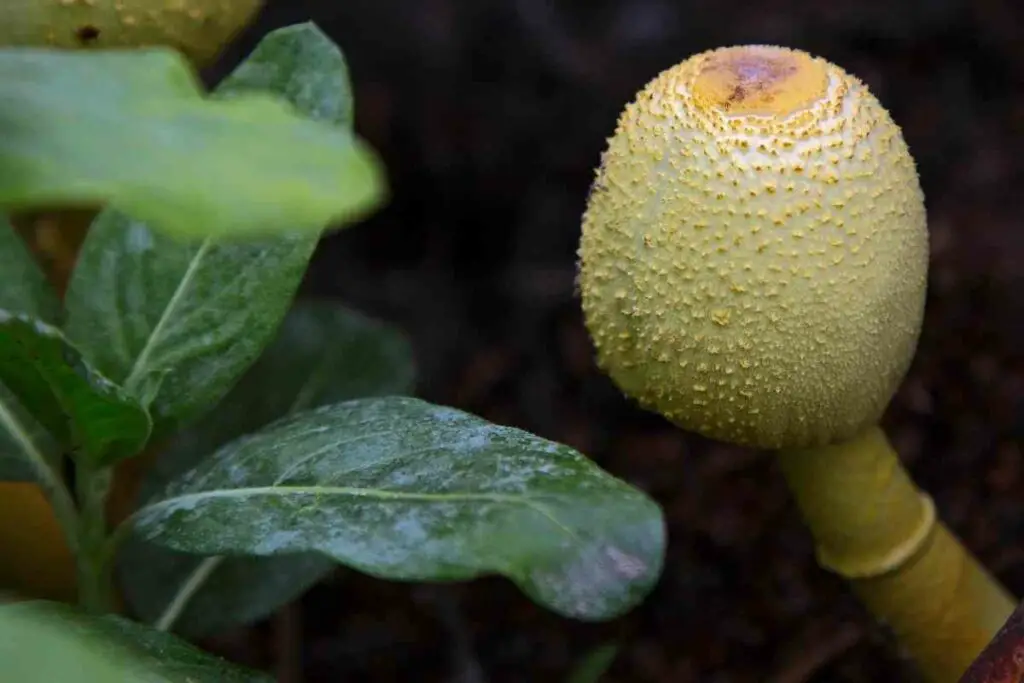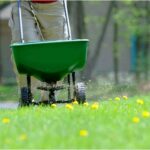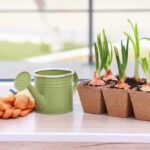Caring for houseplants isn’t always seen as the easiest task. We’re forever hearing people complaining that they simply cannot look after a plant and shouldn’t be given the responsibility.
But their day-to-day maintenance isn’t as difficult as you might think and what a lot of people deem to be a problem could, in fact, be more of a good thing.
So, if you see a yellow mushroom in your houseplant, should you be worried?
These little yellow mushrooms are very common in houseplants and they won’t actually do your plants any harm at all. They’re known by their scientific name leucocoprinus birnbaumii but are more commonly called the flowerpot parasol. Typically, you’ll see these mushrooms growing in subtropical and tropical climates but they’re also not uncommon in greenhouses in cooler climates. In any case, they’re nothing to be concerned about.
Once you have gotten over the shock of finding mushrooms flourishing in the soil of your favorite houseplant, you might then begin to wonder how they can help the plant.
And we’ve got some good news; this is a happy little ecosystem that is sure to thrive. Let’s take a closer look!

Table of Contents
How Do I Know The Mushrooms Are Leucocoprinus Birnbaumii?
If you have spotted some small yellow mushrooms growing in the soil of one of your potted indoor plants then there is a high chance that they are leucocoprinus birnbaumii.
However, there’s a very slim chance that they’re something else so just to be sure, you can compare the mushrooms with the following traits.
- They will have a pale or bright yellow color that is consistent across the entire mushroom.
- The cap of the mushroom begins as an oval shape but will change to more of a bell shape as the mushroom grows.
- The cap is between one and two inches tall.
- The mushroom cap is usually textured and may have scales or small dots. These are always the same color as the rest of the mushroom.
- Unlike some gilled mushrooms, the gills of the flowerpot parasol are not attached to the stem.
- In the early days, the mushroom’s stem will have a ring around it. However, as the fungi matures, this will disappear.
- The stem of this type of mushroom usually measures a few inches.
How Do Yellow Mushrooms Benefit My House Plant?
In the gardening world, there are lots of types of parasitic mushrooms and this is something that concerns plant lovers greatly.
But rest easy in the knowledge that the flowerpot parasol is not a parasite and will do no harm to your plant.
On the contrary, these mushrooms are known as saprotrophic, meaning that they feed on dead organic matter.
What this means for your plant is that the mushrooms will feed on any decaying material within the pot including dead roots and even insects.
Once they have done this, they will then release nutrients back into the soil, therefore improving its quality and providing food for your plant.

How Do The Mushrooms Get There?
You certainly haven’t planted the mushrooms in the pot so where did they come from? If this has left you scratching your head, you’re not alone; a lot of plant enthusiasts wonder how on earth these little mushrooms got there in the first place.
One of the most common reasons for their presence is that the soil was contaminated.
Mushroom spores are tiny and are certainly not visible to the naked eye so if they were present in your potting soil, nobody would have been any the wiser.
However, if they get into the potting mix during the packing process, it is super easy for them to spread across an entire batch.
What’s more, it could be possible that the mushroom spores were present on the plant when you purchased it.
They would have then gotten into the soil and thrived in it owing to how rich it is; this is the perfect condition for mushrooms.
However, you may have noticed that the mushrooms appeared after an accidental heavy watering.
If the soil is too wet, mushrooms will do very well so if you want to avoid them, make sure to not overwater your plant.
Should I Remove The Mushrooms?
If you want to remove the mushrooms then there is absolutely no reason why you shouldn’t.
However, it’s also perfectly acceptable to leave them where they are; the decision is completely up to you.
Some people don’t like how they look and there is a chance that they will spread so if you want to avoid this then go ahead and remove them.
It is important to note, however, that the removal of these mushrooms can be a little tricky so it is worth considering if it’s worth your time and hassle. You will need to report the plant and replace your potting soil.
If you decide to keep the mushrooms then there is a potential that they could be toxic so it is important to keep them out of the reach of children and pets.
But keeping them certainly makes your plant look more interesting if you want something eye-catching.
Conclusion
There is a lot of discussion on gardening forums and social media about the appearance of small yellow mushrooms in the soil of indoor potted plants.
Seeing these in your houseplant could cause you to be alarmed but they’re really nothing to worry about.
These mushrooms are known as flowerpot parasols or leucocoprinus birnbaumii, to call them by their proper name.
They love humid conditions and so are often found in tropical and subtropical regions but they’ll do no harm to your plants and if anything, they’ll actually improve the quality of the soil so it’s bursting with nutrients.













